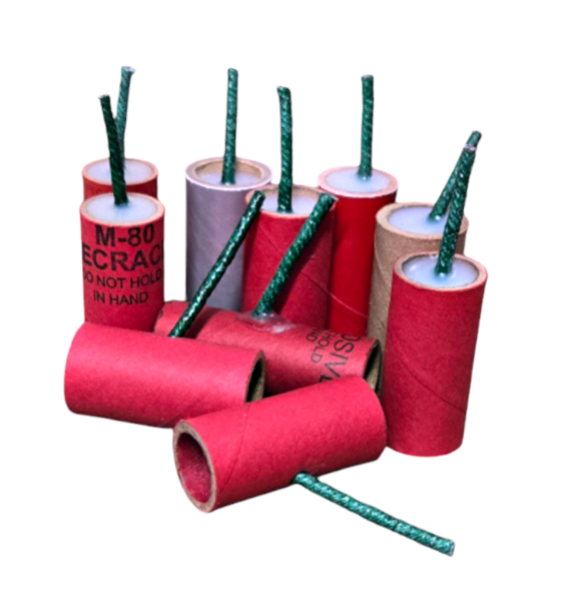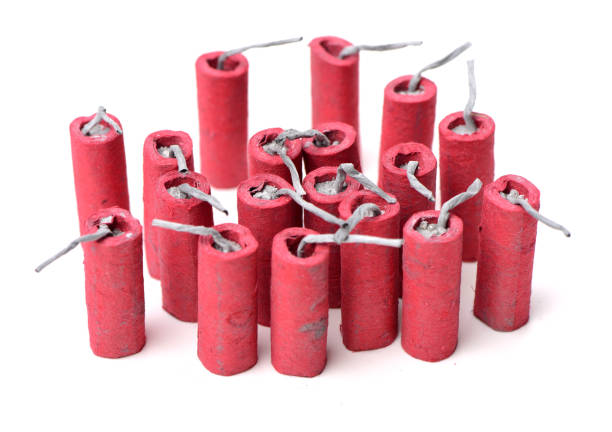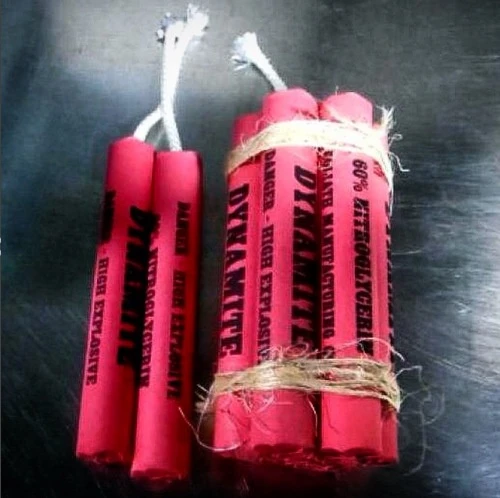M-80s are often regarded as one of the most powerful firecrackers ever made. Originally developed for military use in the mid-20th century, M-80s were later adapted for consumer fireworks, becoming a part of American culture. But despite their popularity, M-80s are surrounded by controversy, regulations, and numerous myths. So, what exactly are M-80s, how are they regulated, and why are they often misunderstood? Let’s explore the complete story of this explosive firecracker.
What Is an M-80? The Explosive’s Origins and Design

The M-80 firecracker is more than just a firework—it’s a piece of military history. M-80s were initially created by the U.S. military to simulate explosions and artillery fire during training exercises. The “M” stands for “military,” following U.S. military nomenclature for standard equipment, and the “80” refers to the original 80 grains (approximately 5.2 grams) of flash powder contained within.
Understanding the Composition of M-80s
- Size and Appearance: The consumer version of an M-80 is a small, red cardboard tube, usually about 1.5 inches long and 9/16 inches in diameter, with a fuse on the side.
- Flash Powder: The flash powder, a pyrotechnic composition known for producing bright flashes and loud bangs, is the main explosive agent in M-80s.
- Fuse: The fuse, commonly known as a cannon or Visco fuse, is designed to ensure a consistent burn rate, providing enough time for the user to retreat to a safe distance.
Although consumer M-80s contain less explosive powder (about 3 grams), they remain one of the most potent firecrackers available—so much so that their use is heavily regulated.
Legality of M-80s: A Complex History of Regulation
The sale and use of M-80s have been subjects of strict regulation, primarily due to safety concerns. Over the years, both U.S. federal and state governments have enacted measures to control the distribution, possession, and use of M-80s.
Regulation in the United States
- Initial Restrictions: The regulation of M-80s began in 1966, following a series of injuries and property damage incidents linked to unregulated fireworks. This led to amendments to the Federal Hazardous Substances Labeling Act.
- The Child Protection Act of 1966: This law, with assistance from the Consumer Product Safety Commission (CPSC), aimed to limit the amount of flash powder in consumer fireworks. M-80s were classified as ground-based “consumer fireworks” and regulated by the Bureau of Alcohol, Tobacco, Firearms, and Explosives (ATF).
- ATF License Requirements: The ATF restricts consumer possession of fireworks containing more than 50 milligrams of flash powder, which includes M-80s, M-100s, cherry bombs, and similar devices. To legally possess these fireworks, individuals must obtain a federal explosives license.
- Further Restrictions: In 1975, federal regulations limited all consumer-grade fireworks to a maximum of 50 milligrams of flash powder. However, larger pyrotechnic devices, like rockets or Roman candles, can legally contain more flash powder, provided they meet classification standards.
Despite these regulations, some individuals can obtain M-80s legally under special conditions. Farmers, for example, may receive them from government agencies to scare away wildlife that damages crops.
Legality in Canada
In Canada, M-80s are entirely illegal. It is unlawful to manufacture, possess, transport, or import M-80s, making them strictly prohibited throughout the country.
The Rise of Fake M-80s: A Misleading Trend in Fireworks

Due to the strict regulation of genuine M-80s, many fake versions have emerged in the consumer market. These look-alike firecrackers are marketed with names like “M-80 Firecracker,” “M-8000,” or “M-##,” but they differ significantly from authentic M-80s in composition and power.
How Fake M-80s Differ from Real Ones
- Less Flash Powder: Fake M-80s typically contain up to 50 milligrams of flash powder, significantly less than the 5.2 grams in real M-80s.
- Capsule Design: Fake M-80s often have a small powder capsule encased in plaster or other materials, with two plastic end caps, which creates the illusion of a fully loaded device.
- Fuse Positioning: In fake M-80s, the fuse often protrudes from one end of the device, unlike the real M-80s where it comes from the middle of the tube.
This deceptive marketing can mislead consumers into believing they have purchased the real thing, which not only raises safety concerns but also perpetuates myths about M-80s’ true capabilities.
Debunking Myths About M-80s
M-80s have inspired numerous urban legends over the years, many of which exaggerate their power. One of the most persistent myths is that an M-80 is equivalent to a quarter-stick of dynamite. However, this is far from the truth.
M-80s vs. Dynamite: Understanding the Differences

- Explosive Composition: Dynamite contains a stable, high-explosive nitroglycerin base, while M-80s contain a low explosive powder like flash powder or black powder.
- Blast Power: Dynamite is significantly more powerful than M-80s, which are designed to create loud bangs and flashes rather than destructive force.
- Safety Considerations: While M-80s can still cause serious injuries, they are nowhere near the destructive potential of dynamite, which is used for demolition and other industrial purposes.
Understanding the real capabilities of M-80s is essential to dispel misconceptions and promote safe handling of fireworks.
Safety Concerns Surrounding M-80s
Even though genuine M-80s are rare and heavily regulated, safety concerns remain high due to their potential for injury. Misuse, improper handling, or illegal modifications can result in serious injuries, including burns, hearing damage, and loss of limbs.
Key Safety Tips When Dealing with Firecrackers
- Never Hold in Hand: Never attempt to hold an M-80 (or any firecracker) in your hand while lighting it.
- Maintain Safe Distance: Always retreat to a safe distance after lighting a fuse.
- Use Protective Gear: Consider using safety goggles and ear protection to reduce the risk of injuries.
- Legal Compliance: Only use firecrackers that comply with federal and state laws, and avoid purchasing from unverified sources.
By adhering to these safety tips, you can reduce the risk of injuries and enjoy fireworks responsibly.
Conclusion: Understanding M-80s and Their Place in Fireworks History
M-80s are one of the most iconic and misunderstood firecrackers in American history. Initially created for military training, they transitioned into consumer fireworks but were later restricted due to safety concerns. While they are often surrounded by myths and legends, understanding their real capabilities, safety risks, and legal status is crucial for anyone considering their use. Always prioritize safety, legal compliance, and accurate knowledge when handling any kind of explosive device.


